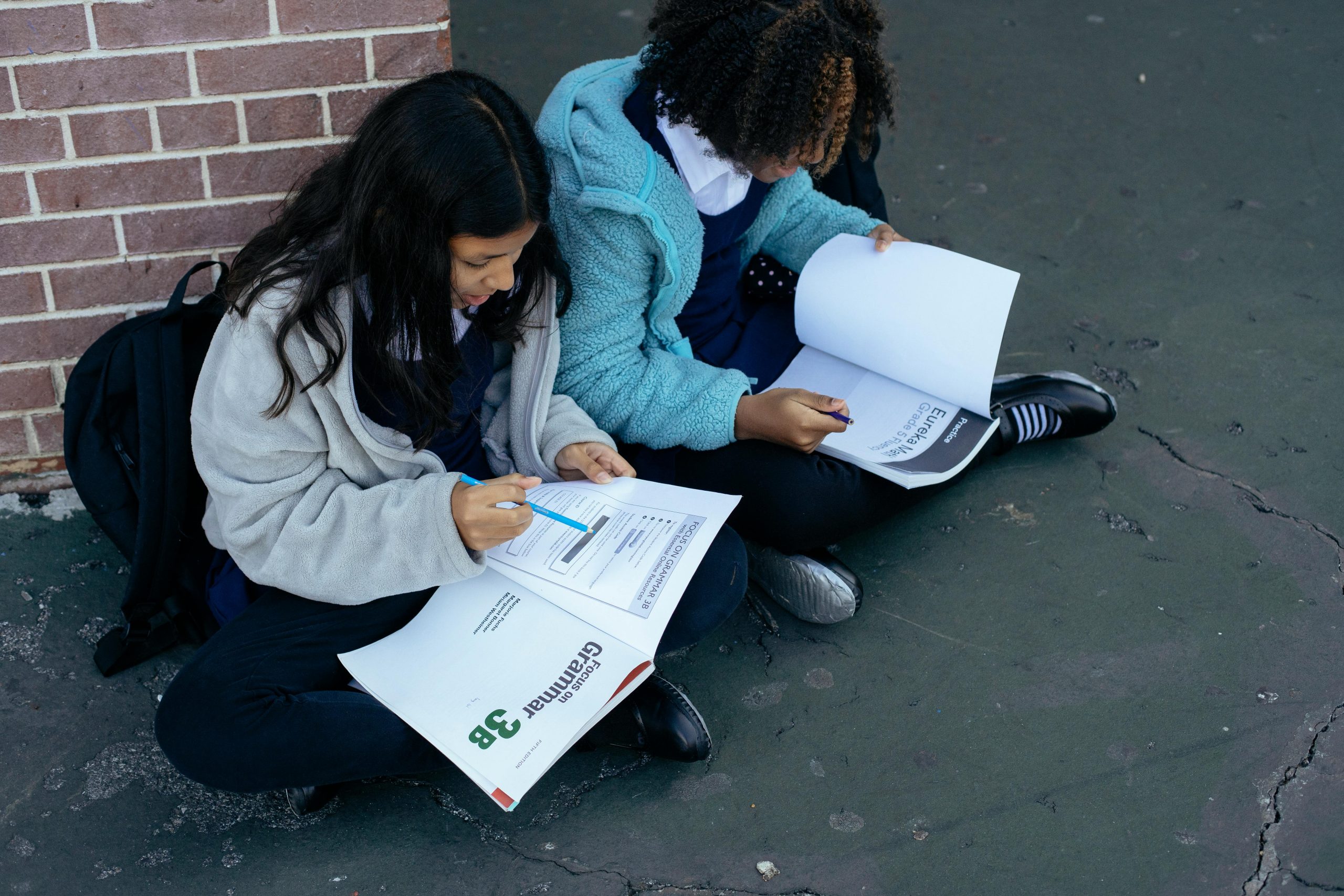A Brief Overview of the Value of a Good Learning Environment at Home

The notion of a learning environment encompasses more than just the physical classroom; it also includes the attitudes, atmosphere, and circumstances in which learning takes place. Encouraging learning environments at home are essential for fostering children’s emotional health as well as improving their academic achievement. It becomes increasingly important for families to comprehend the effects of this kind of environment as they make the shift from traditional classroom settings to home learning. It’s about establishing an environment in which successess is celebrated, curiosity is encouraged, and mistakes are seen as learning opportunities. This change lays a solid foundation for lifelong learning and emotional resilience in children, while also supporting academic success and fostering a sense of security and confidence in them.
Creating a Specialized Learning Area

Selecting the Ideal Site: Important Considerations
- Lighting: Natural light is extremely important because it improves mood and productivity.
- Level of Noise: It’s easier to stay focused in a calm, private place.
- Comfort: guarantees that students can study comfortably for extended periods of time.
Key Components of an Effective Work Environment
- A well-appointed desk and a cozy chair are the foundation of any effective learning environment.
- Stationery, textbooks, and a computer or tablet are examples of necessary supplies that should be easily accessible.
- Organization is essential; a neat workstation reduces distractions and increases productivity. A clear desk corresponds to a clear mind.
Customizing the Area to Encourage Education and Originality
Adding personal touches to the classroom can greatly increase creativity and motivation. Use décor, motivational sayings, or artwork to highlight the learner’s individuality. This serves as a continuous reminder of their learning objectives and aspirations in addition to making the area welcoming. Add a little greenery, such as a plant, to liven up the place and enhance the quality of the air. In the end, cultivating a love of learning can be achieved through the use of a personalized learning environment.
It takes more than just physical space to create a supportive, motivating, and inspiring learning environment at home. Instead, it involves creating an atmosphere that encourages and supports students. Families can create a dedicated learning space that is both practical and inspiring by carefully choosing the ideal location, stocking the area with necessary items, and adding unique touches. Thus, the foundation for both academic achievement and a lifelong love of learning is laid.
Creating a Schedule and Outlining Expectations

The Function of Organization in Education: Juggling Adaptability and Compliance
For learning to be effective, structure is essential. It offers a structure that directs students along their educational path, making sure that each action is deliberate and focused on reaching predetermined objectives. But it’s important to find a balance between discipline and adaptability. Overly flexible scheduling can result in procrastination and lack of focus, while an overly rigid schedule can hinder creativity and adaptability. The secret is to establish a routine that is both flexible and structured, able to handle both the predictable and unpredictable aspects of learning.
Making a Daily Timetable: Including Assignments, Rest Periods, and Leisure Activities
- Set aside specific times for academic work so that the hardest subjects can be completed when concentration is at its peak.
- Breaks are equally important because they give you a chance to relax and refuel, which increases productivity.
- Incorporate leisure pursuits. These not only provide a much-needed break from studying but also foster creativity and emotional health.
Academic pursuits and personal interests can coexist peacefully in a healthy learning environment when there is a balanced schedule in place.
Clearly defining objectives and expectations in order to inspire learners
- Establishing attainable goals gives students focus and direction, inspiring them to go beyond their comfort zones.
- Make sure your goals are specific, measurable, attainable, relevant, and time-bound (SMART) when setting both short- and long-term objectives.
- Honoring accomplishments—no matter how minor—increases self-esteem and serves as a reminder of the importance of diligence and hard work.
By acknowledging effort and advancement and establishing reasonable expectations, we encourage students to pursue excellence and see obstacles as chances for personal development.
Establishing a conducive learning atmosphere at home is a complex process that goes beyond the actual area. It entails creating a schedule that strikes a balance between work and play, defining specific objectives to direct and inspire students, and cultivating a supportive and encouraging environment. By doing this, we not only improve academic achievement but also help create resilient, well-rounded people who are ready to take on the challenges of the future with confidence.
Including Interactive and Interesting Educational Activities

Interactive Learning’s Advantages: Maintaining Students’ Interest and Motivation
By converting the house into a lively classroom, interactive learning piques students’ interest and ignites their passion. It’s essential to maintaining student interest and creating memorable lessons. When students actively engage in the material, they are making a deeper connection with it than just taking it in. By actively participating, learning becomes more enjoyable and less like a chore. This increases motivation. What was the outcome? a vibrant, dynamic home learning setting where new things are discovered every day.
Inspiring Learning Activities for a Range of Subjects
- Calculus: Try your problem-solving abilities with some online puzzles.
- Science: comes to life with simple, DIY experiments conducted at home.
- Past Events: can be investigated via virtual museum tours and interactive timelines.
- Language Arts: Grow by writing creatively for blogs.
- Art: Creativity is stimulated by projects.
- Exercise Education: can be energized by dance competitions or family yoga sessions.
Technology and Internet Resources Used to Improve Learning
A valuable ally in the pursuit of interesting learning is technology. Interactive games are created from complex concepts using educational apps. Online learning environments provide courses for all age groups and interests in subjects ranging from cooking to coding. With the use of virtual reality, students can travel to far-off galaxies or ancient ruins, making every lesson an amazing experience. Technology and internet resources can be integrated to make learning not only efficient but actually thrilling.
There is more to creating a healthy learning environment at home than just furniture placement and daily schedules. It’s about making the most of every day to discover, grow, and explore. We can improve academic performance and foster a lifelong love of learning by implementing dynamic and captivating learning activities. This innovative and varied approach gets our kids ready not only for today’s challenges but also for a lifetime of curiosity and love of learning.
Promoting Self-sufficiency and Individual Education

Educating Self-Control and Accountability: The Way to Self-Sufficient Learning
It is essential to instill responsibility and self-control in students. It involves helping them to make their own goals, track their development, and consider the lessons they have learned. Students who feel empowered can learn independently and take control of their own educational journeys. Fostering a sense of ownership and pride in their accomplishments is facilitated by encouraging them to set realistic, achievable goals, manage their time effectively, and create a study schedule.
Resources and Methods to Assist Students in Taking Charge of Their Education
- Digital Apps: Monitor your time management and study habits.
- Use the Pomodoro Technique: facilitates effective study time management.
- Mind Mapping: helps with mental organization.
Parental Guidance’s Function in Ensuring Support and Encouraging Autonomy
Finding the ideal balance between encouraging autonomy and offering support requires parental guidance. By promoting decision-making and problem-solving skills and letting kids experience the inevitable consequences of their decisions, parents can help their kids become more independent. But it’s also critical to act as a safety net by being accessible and providing assistance when required. This entails being accessible to talk about difficulties, acknowledge accomplishments, and offer guidance without taking charge. Using this method gives kids the freedom to explore, make mistakes, and grow from them, all while feeling supported on their path to independent learning.
Fostering independence and self-directed learning is a part of establishing a healthy learning environment at home. We create the groundwork for our kids to become self-motivated learners by teaching them self-regulation, giving them the appropriate resources and techniques, and providing them with sensible parental guidance. This improves their academic performance and equips them with the knowledge, self-assurance, and perseverance needed to succeed in the face of future challenges.
In Conclusion
Fostering a supportive learning environment at home encourages curiosity throughout life. It guides students through obstacles toward empowerment by striking a balance between discipline and the excitement of discovery. Through the implementation of intentional areas, well-organized schedules, and captivating exercises, we foster adaptability and an enthusiasm for education. In order to secure the future success of our kids, let’s pledge to support these dynamic educational journeys.
How to Create a Positive Learning Environment at Home FAQs
Creating a supportive community involves connecting with other parents for advice and resources, as well as involving family members in the learning process. Participating in online forums or local parent groups can provide valuable support and ideas. Encouraging your child to share their learning with siblings or friends, even virtually, can also enhance their educational experience and provide social interaction.
Encouraging independence in learning starts with providing opportunities for your child to make choices about what and how they learn, within set boundaries. This could involve letting them pick topics of interest for projects or decide the order in which they complete tasks. Guiding them in setting their own goals and creating a plan to achieve them can also foster a sense of ownership and responsibility towards their learning.
Helping your child stay focused involves creating a structured routine that includes regular breaks and setting clear, manageable goals for each study session. A clutter-free, dedicated study space can minimize distractions and aid concentration. Additionally, incorporating short, varied tasks within their study routine can help maintain their interest and focus.
Creating an engaging learning environment at home involves incorporating interactive and practical learning activities that align with your child’s interests. This approach helps to capture their attention and makes learning feel less like a chore and more like an enjoyable experience. Incorporating educational games, hands-on projects, and real-world problem-solving can significantly enhance their engagement and motivation.
Balancing academic needs with emotional well-being involves recognizing the signs of stress or frustration and addressing them through open communication and providing emotional support. It’s important to create a learning schedule that allows time for relaxation and activities that your child enjoys. Encouraging a growth mindset, where challenges are seen as opportunities to learn and grow, can also help maintain a healthy balance.
Incorporating physical activity into a home learning environment can be achieved by scheduling short exercise breaks, integrating movement into learning activities, or using online exercise resources designed for children. These activities not only break up the monotony of studying but also improve concentration and overall well-being. Encouraging outdoor play or participation in sports can also provide necessary physical activity and a break from academic work.
A positive learning environment at home is characterized by a quiet and comfortable study space, access to necessary learning materials, and a routine that includes breaks and varied activities. It’s important to ensure that this space is free from distractions and is conducive to focused study time. Regular encouragement and positive feedback also play a crucial role in fostering a love for learning.
Essential resources for an effective learning environment at home include access to books, educational websites, and supplies for hands-on projects. Having a designated study area equipped with necessary technology and a comfortable workspace is also crucial. Additionally, access to a quiet, well-lit, and organized space can significantly impact the effectiveness of home learning.
Technology, when used appropriately, can greatly enhance the learning experience by providing access to a vast array of resources and interactive tools. It offers personalized learning experiences through educational apps and websites that cater to your child’s specific needs and learning pace. However, it’s important to balance screen time with offline activities to ensure a well-rounded educational experience.
Motivation can be fostered by setting achievable goals, providing positive reinforcement, and making learning relevant to your child’s interests and real-world applications. Celebrating their achievements, no matter how small, can boost their confidence and enthusiasm for learning. Involving them in the planning process and allowing them to have a say in their learning topics can also increase their motivation.

Jasmine Duque-Love is a mother of one and a practicing physiotherapist with a Phd in Physiotherapy

